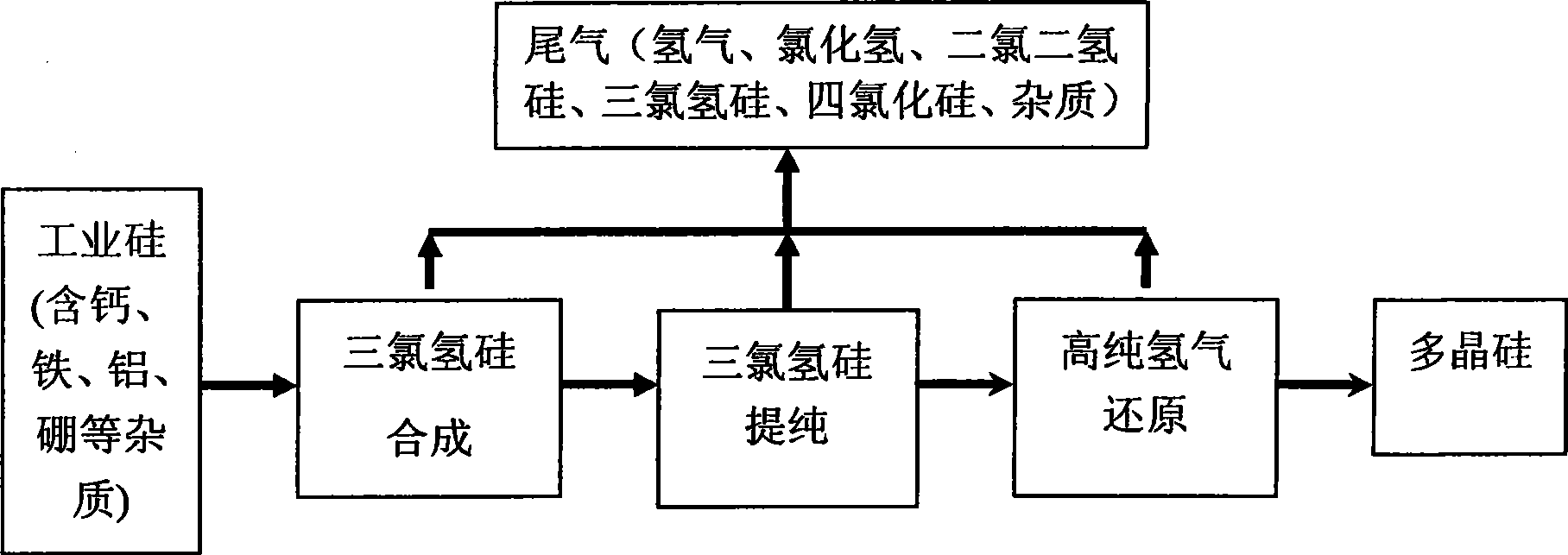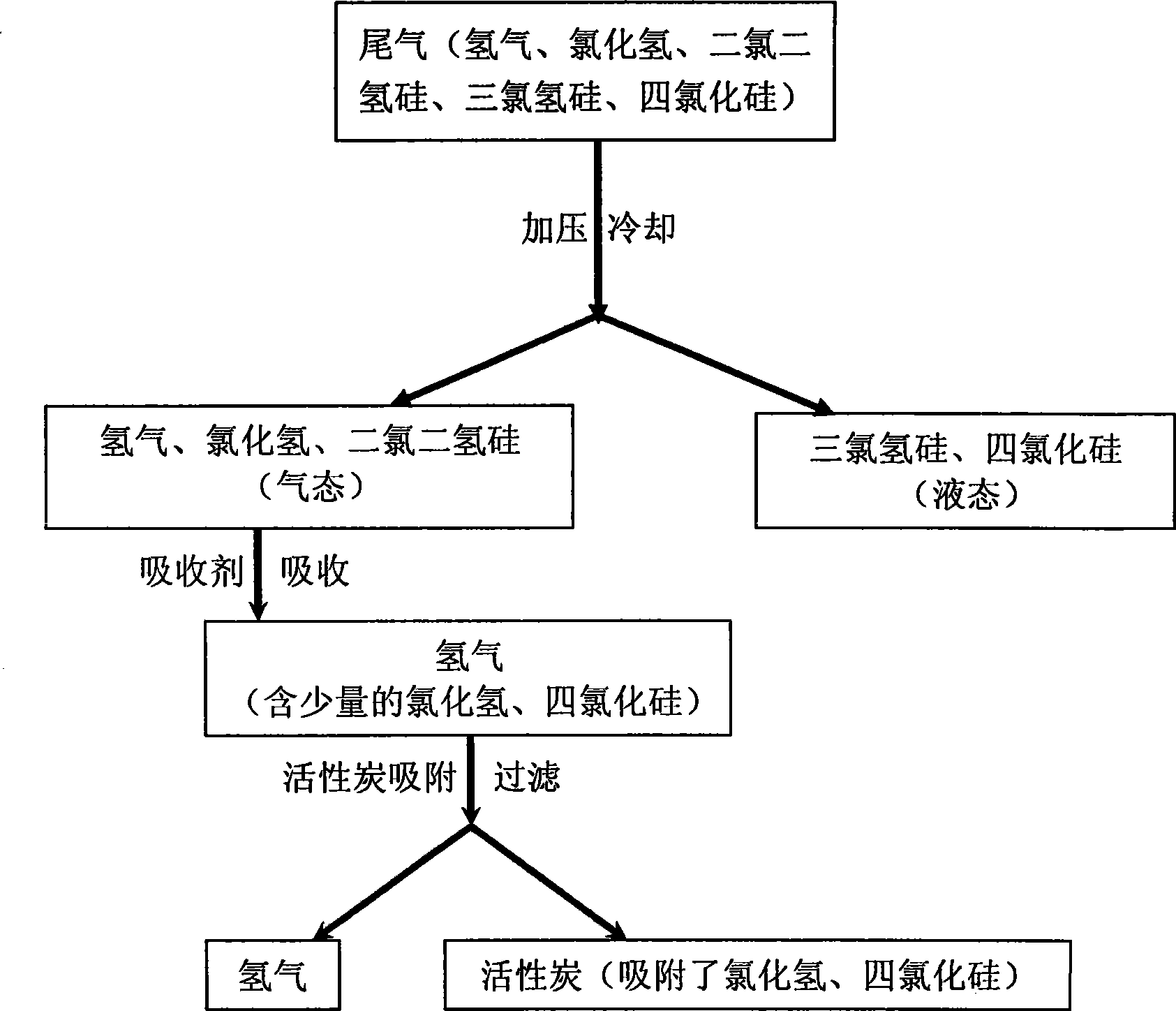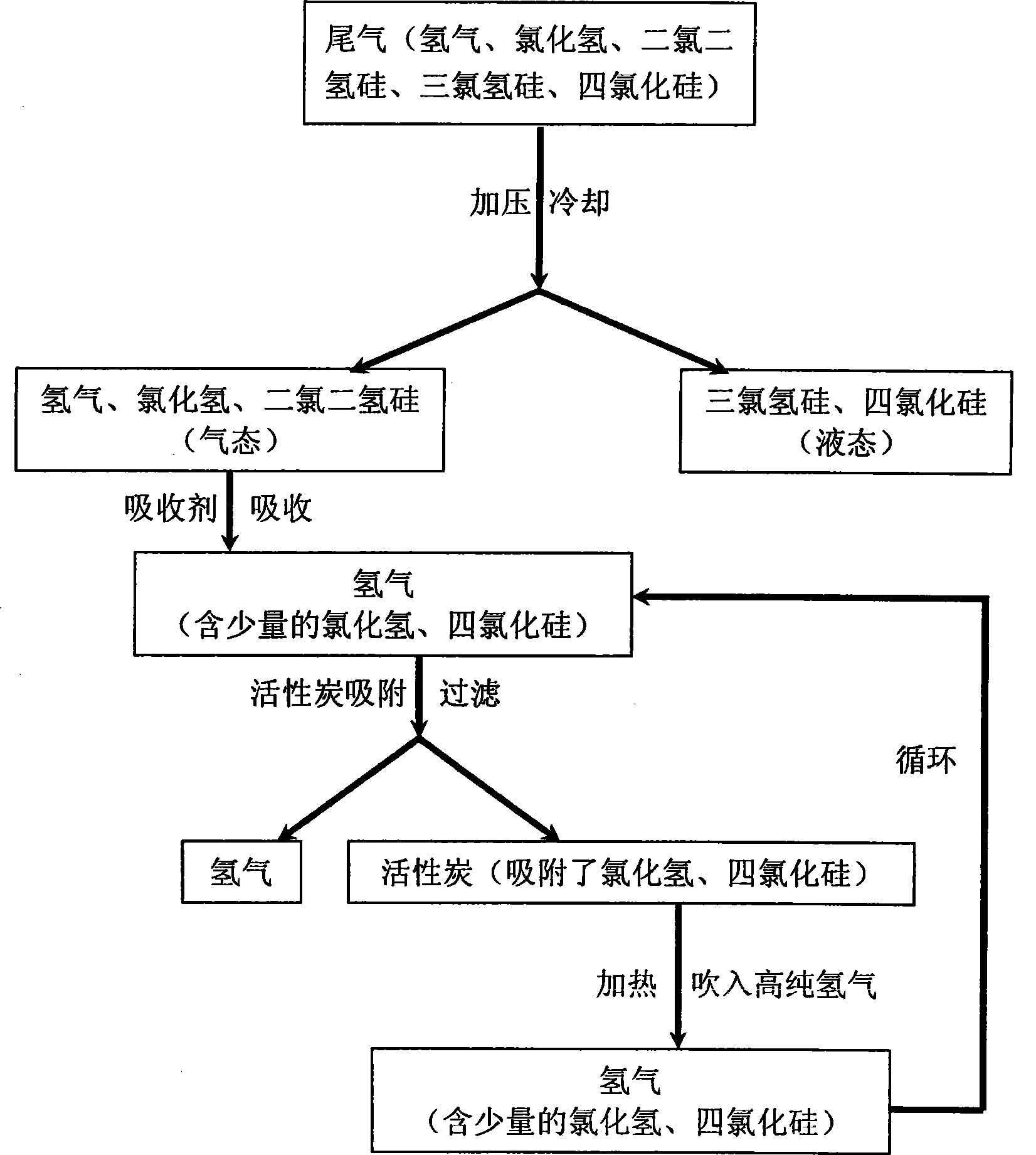Method for recovering hydrogen from tail gas produced in polysilicon production
A polysilicon and hydrogen technology, applied in separation methods, chemical instruments and methods, hydrogen separation, etc., can solve the problems of insufficient utilization, large material consumption, environmental pollution, etc., to reduce the generation and quantity of pollutants, The effect of reducing consumption and solving environmental pollution problems
- Summary
- Abstract
- Description
- Claims
- Application Information
AI Technical Summary
Problems solved by technology
Method used
Image
Examples
Embodiment 1
[0021] refer to figure 1 , which shows a flow chart of the industrial production of polysilicon that can be applied to the hydrogen recovery method according to the embodiment of the present invention. In the prior art, there are multiple methods for industrial polysilicon production. The application of the polysilicon production process of the present invention is Using industrial silicon and hydrogen chloride (HCl) as the main raw materials, trichlorosilane (SiHCl) is produced by controlling the reaction conditions. 3 )-based mixture of chlorosilane and hydrogen, and then trichlorosilane (SiHCl 3 ) after being purified, sent to the reduction furnace to make trichlorosilane (SiHCl 3 ) and auxiliary material hydrogen (H 2 ) reaction, reduction to generate polysilicon.
[0022] In the process of the above-mentioned industrial production of polysilicon, the tail gas produced mainly includes hydrogen (H 2 ), hydrogen chloride (HCl), and chlorosilanes, which mainly include dic...
Embodiment 2
[0035] Refer below image 3 A method for recovering hydrogen from tail gas produced in the production of polysilicon according to a second embodiment of the present invention will be described. image 3 Shown is the flow chart according to the second embodiment of the present invention, and the main difference between this embodiment and the above-mentioned first embodiment is that it also includes hydrogen chloride (HCl) and silicon tetrachloride (SiCl) adsorbed in the activated carbon. 4 ) recovery process.
[0036] Specifically, hydrogen chloride (HCl) and chlorosilane (here, the main component of the chlorosilane is silicon tetrachloride (SiCl) adsorbed in the activated carbon 4 )) is heated to a temperature of about 80-180°C, thereby improving the movement activity of gas molecules, and then using, for example, high-purity hydrogen (H 2 ) will be heated gaseous hydrogen chloride (HCl) and chlorosilane (here, the main component of the chlorosilane is silicon tetrachlorid...
Embodiment 3
[0038] Refer below Figure 4 A method for recovering hydrogen from tail gas produced in the production of polysilicon according to a third embodiment of the present invention will be described. refer to Figure 4 , The main difference between the third embodiment of the present invention and the above-mentioned first and second embodiments is: it also includes the use of liquid silicon tetrachloride (SiCl 4 ) a step of rinsing the tail gas.
[0039] In the traditional wet tail gas treatment process, the tail gas is usually rinsed with water. The purpose is to wash the hydrogen chloride (HCl) in the tail gas into the water, and part of the unrecovered chlorosilane is hydrolyzed into Hydrogen chloride and silicon dioxide hydrate, such sewage needs to be treated separately, resulting in large material consumption and serious environmental pollution, which limits large-scale industrial production.
[0040] According to an embodiment of the present invention, the washing process...
PUM
 Login to View More
Login to View More Abstract
Description
Claims
Application Information
 Login to View More
Login to View More - R&D
- Intellectual Property
- Life Sciences
- Materials
- Tech Scout
- Unparalleled Data Quality
- Higher Quality Content
- 60% Fewer Hallucinations
Browse by: Latest US Patents, China's latest patents, Technical Efficacy Thesaurus, Application Domain, Technology Topic, Popular Technical Reports.
© 2025 PatSnap. All rights reserved.Legal|Privacy policy|Modern Slavery Act Transparency Statement|Sitemap|About US| Contact US: help@patsnap.com



